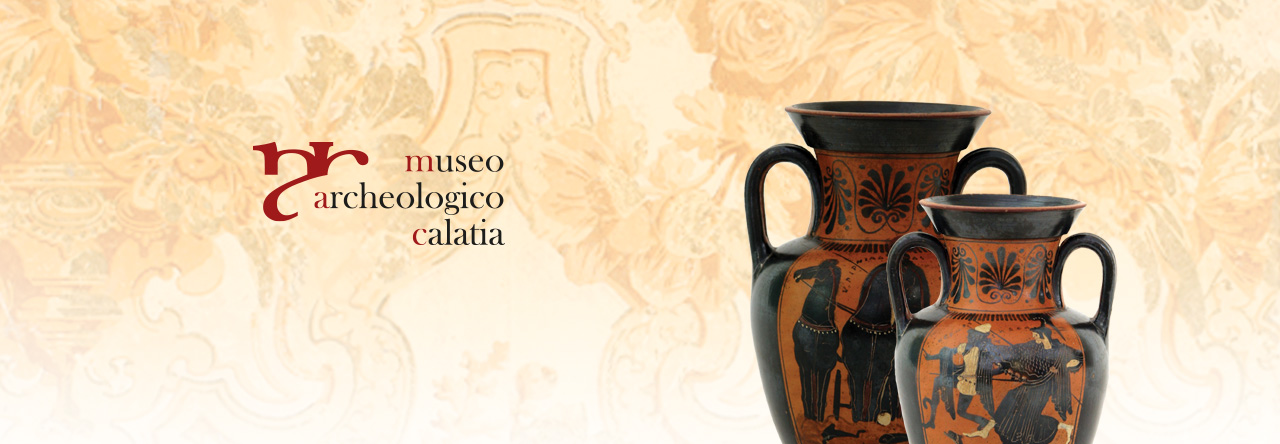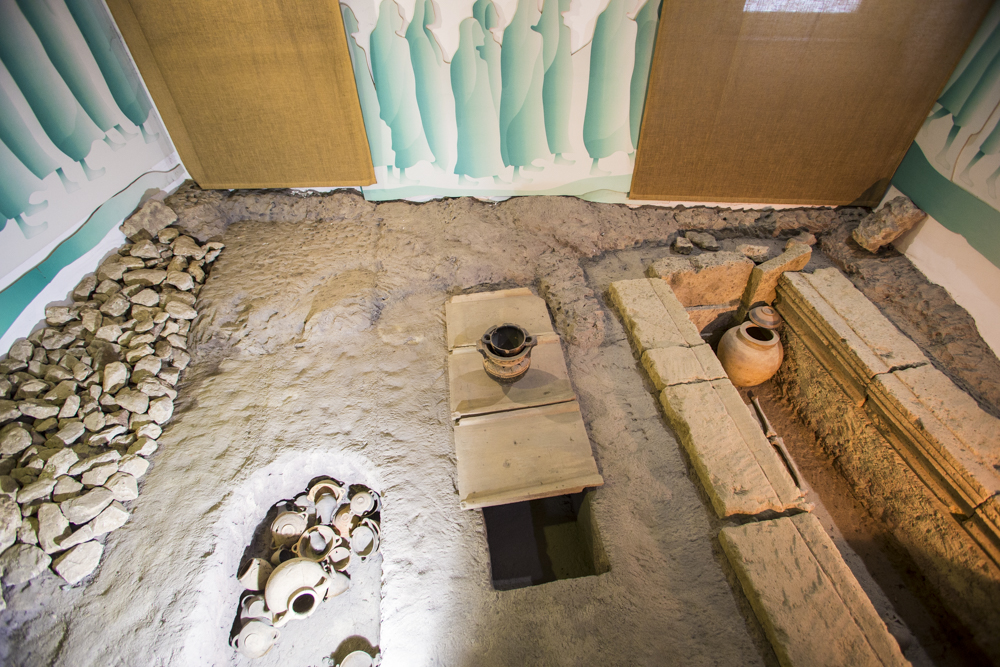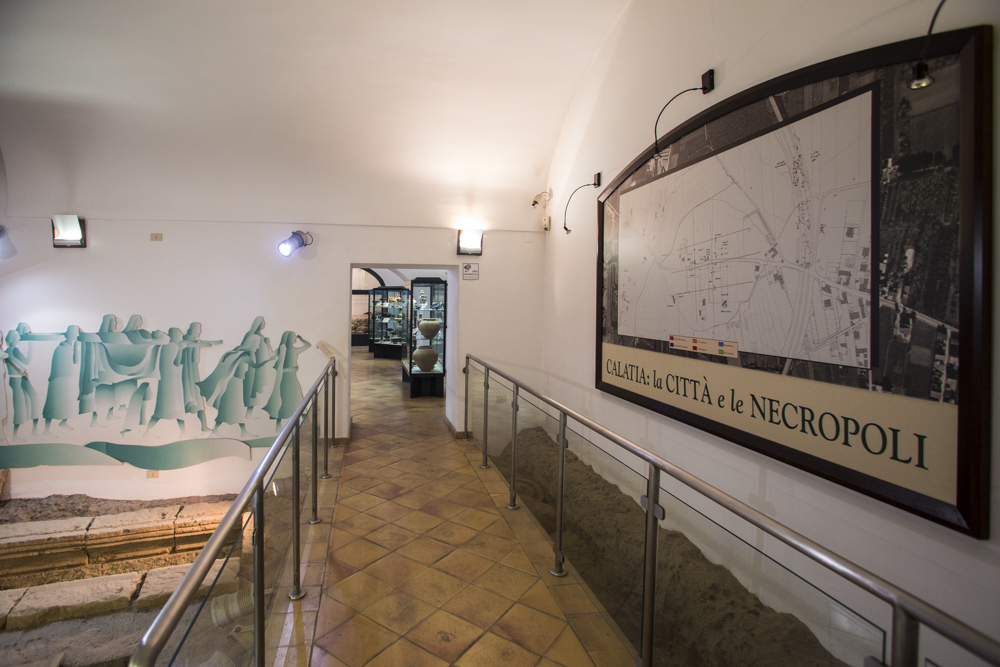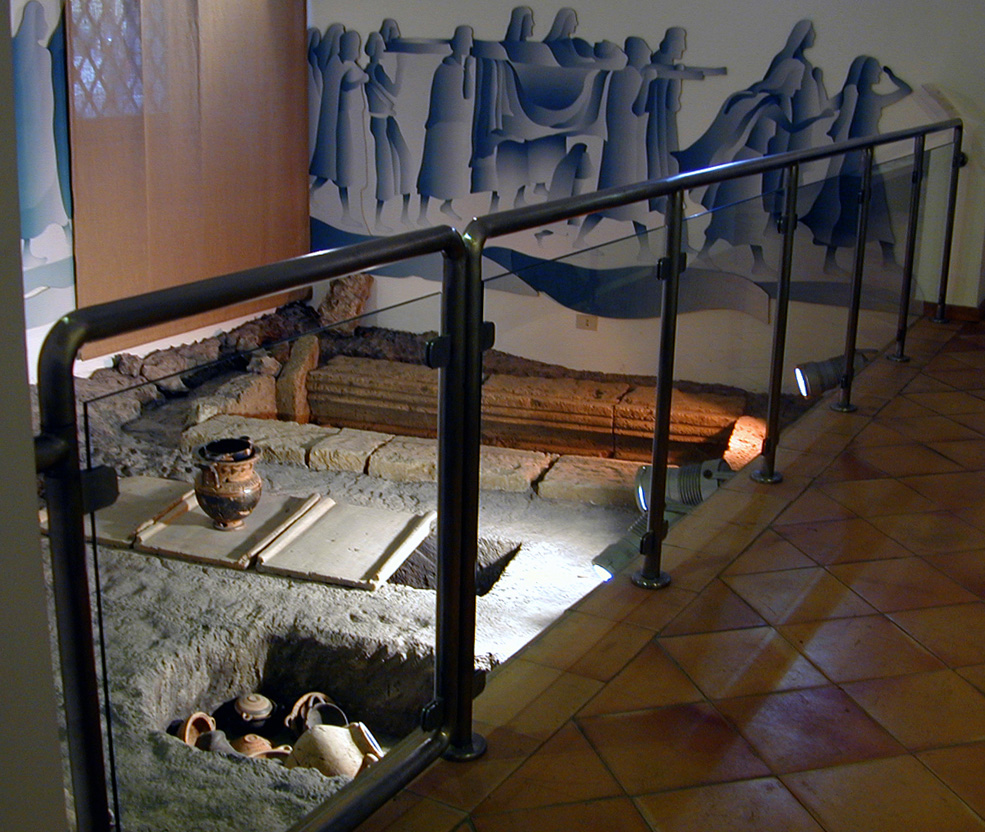Funerary customs and habits change over the centuries, but putting objects and vases in the grave next to the deceased is a tradition that always stays the same, even if it has different forms and ways. In this room there is a reproduction to original size that represents the different types of graves over the centuries. The oldest graves date back to the last quarter of the VIII century BC; they are pit graves covered with cobblestones.
From the VII century BC there are simple pit graves, the funerary objects used to store and collect food are near the head of the deceased; those used to drink and give wine are at his feet.
Pit graves covered with roof tiles, where you can find the vase to collect the offerings, and tuff cist graves date back between the V and the IV century BC.
The cremation funerary rite is typical of the Roman graves until the Early Imperial Age. Later, the burial rite becomes predominant; young children are buried in transport amphorae.
The blow-up shows the archaeological plan of the town and necropolis, using different colours to represent the chronological phases.
continue the visit
Rooms 4 and 5 – The Necropolis: The funerary objects


 Italiano
Italiano Français
Français Español
Español Deutsch
Deutsch






